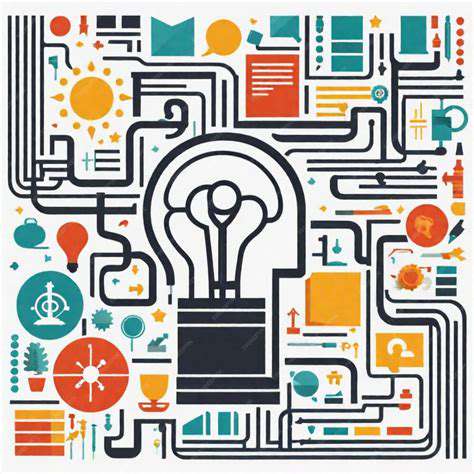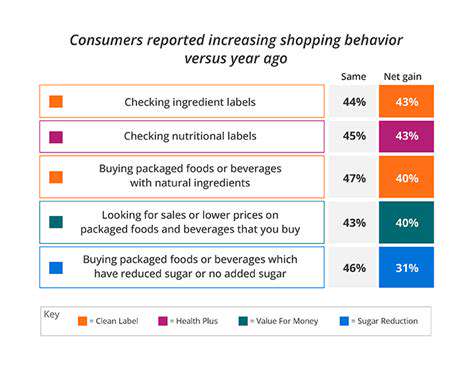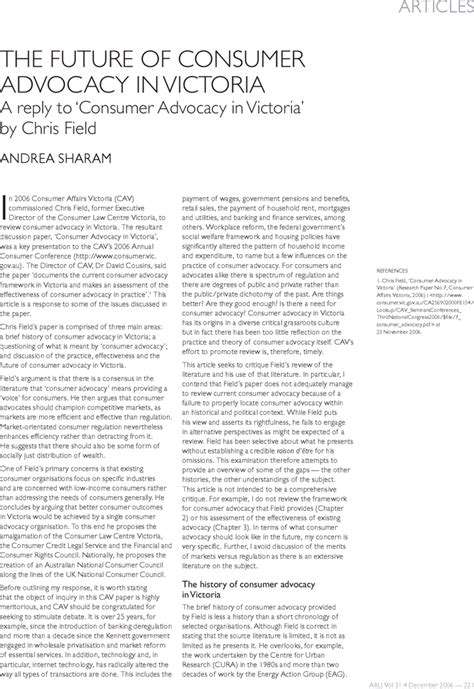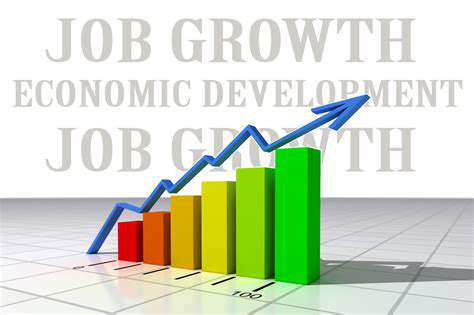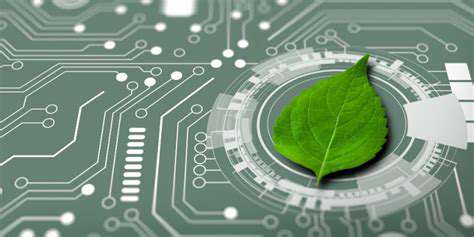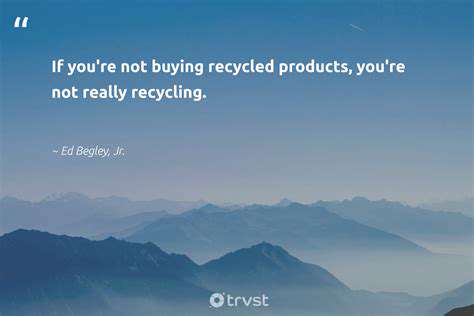Education for Circularity: Empowering Change Makers: New Curricula
Understanding the Circular Economy
The circular economy represents a fundamental shift from the traditional linear take-make-dispose model. It's a systemic approach that prioritizes resource efficiency, reuse, and regeneration. This means designing products for durability, repairability, and recyclability, minimizing waste and maximizing the value of materials throughout their lifecycle. Understanding the principles of this model is crucial for creating a sustainable future.
This shift requires a fundamental change in perspective, moving from a mindset focused on consumption and disposal to one centered on resource management and regeneration. This includes understanding the interconnectedness of various sectors, from production and consumption to waste management and policy.
Integrating Circular Economy Principles into Education
Integrating circular economy principles into educational curricula is not just about adding new subjects; it's about fundamentally rethinking how we teach existing subjects. This means incorporating circular economy concepts into science, engineering, design, business, and even social studies classes. For instance, exploring the environmental impact of different materials and production processes can be integrated into science lessons, while design courses can focus on creating sustainable and durable products.
By weaving circular economy principles into existing subjects, students develop a holistic understanding of the interconnectedness of systems and the importance of sustainable practices. This approach fosters critical thinking skills and prepares students to become agents of change in their communities.
Developing Curriculum Content for Circularity
Curriculum development for circularity needs to address various learning levels, from primary school to higher education. For younger students, the focus can be on simple concepts like reducing waste, reusing materials, and understanding the importance of recycling. As students progress, the curriculum can delve deeper into more complex topics, such as material science, product design for sustainability, and circular economy business models.
Creating engaging and interactive learning experiences is vital. Hands-on activities, case studies, and real-world examples can help students connect theoretical concepts to practical applications. This approach fosters a deeper understanding and engagement with the subject matter.
Training Educators to Teach Circularity
Educators need specialized training to effectively teach circular economy concepts. This involves not just providing knowledge about the circular economy but also equipping them with practical strategies for integrating these principles into their teaching methods. Professional development programs should focus on providing educators with the necessary resources, tools, and pedagogical approaches to effectively teach this complex subject matter.
Workshops, online courses, and collaborative learning opportunities can empower educators to become proficient in teaching circular economy principles. This ensures that students receive accurate and engaging instruction, fostering a generation equipped to drive positive change.
Promoting Interdisciplinary Collaboration
The circular economy is a multifaceted concept that requires collaboration across different disciplines. To effectively develop circular economy literacy, educational institutions need to foster interdisciplinary collaborations between science, engineering, design, business, and social sciences departments. This collaborative approach allows for a holistic understanding of the complexities of the circular economy.
Joint projects, research initiatives, and cross-curricular teaching strategies can foster a more integrated and comprehensive understanding of the circular economy. This approach will help students develop a more nuanced and holistic perspective on sustainability, preparing them for the challenges and opportunities of a circular future.
Integrating Circularity Across Disciplines
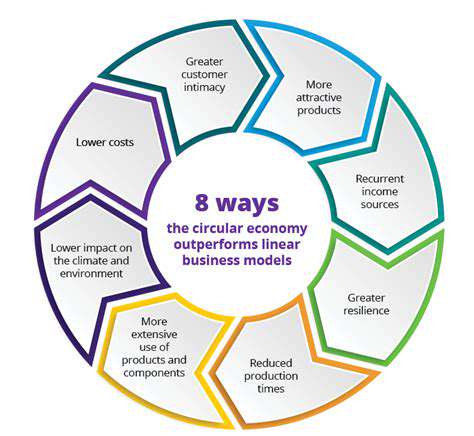
Integrating Circularity into Supply Chains
Integrating circularity into supply chains is a crucial step towards a more sustainable future. This involves a fundamental shift in thinking, moving away from the traditional linear take-make-dispose model to one that prioritizes resource efficiency, reuse, and regeneration. By designing products with recyclability and reusability in mind, companies can minimize waste and maximize the lifespan of materials. This approach not only reduces environmental impact but also presents exciting opportunities for cost savings and innovation.
A key aspect of integrating circularity is the development of closed-loop systems. These systems aim to keep resources in use for as long as possible, recovering and regenerating materials at the end of their life cycle. This requires collaboration between various stakeholders, from manufacturers and suppliers to consumers and recyclers, to ensure that materials are collected, processed, and reused effectively. Companies need to rethink their entire value chain, from product design and manufacturing to distribution and end-of-life management.
Challenges and Opportunities
Implementing circularity across diverse industries presents unique challenges. One significant hurdle is the lack of standardized processes and regulations for the collection, sorting, and processing of recycled materials. This often leads to inconsistencies in quality and creates barriers to widespread adoption. However, these challenges also represent opportunities for innovation and collaboration. Developing new technologies and processes to improve material recovery and recycling is essential.
Another key challenge is consumer behavior. Encouraging consumers to participate in circular practices, such as returning products for reuse or recycling, requires effective communication and incentives. This includes educating consumers about the benefits of circularity and providing accessible recycling and reuse options. This shift in consumer behavior is crucial for the success of circular economy initiatives.
Measuring and Monitoring Progress
To effectively integrate circularity, companies need robust metrics and monitoring systems to track progress and identify areas for improvement. This includes quantifying the reduction in waste, the increase in resource efficiency, and the overall environmental impact of their operations. Monitoring the performance of circular initiatives is important for identifying successes and failures. This allows for adjustments and improvements in efficiency.
Furthermore, clear and transparent reporting mechanisms are essential for demonstrating accountability and building trust with stakeholders. Publicly sharing progress reports on circularity initiatives can help build transparency and encourage others to adopt similar practices. Transparency and clear communication are key to building trust and motivating stakeholders to participate in circular economy initiatives.
Livestreaming platforms aren't just about showcasing content; they're becoming powerful tools for forging genuine connections. The ability to interact with viewers in real-time, fostering a sense of community, is a key factor driving the rise of this phenomenon. This real-time interaction allows for the development of relationships, fostering a sense of belonging that transcends geographical boundaries.
Cultivating Circular Entrepreneurship and Innovation
Understanding the Circular Economy
The circular economy is a systemic approach to development that aims to decouple economic growth from resource consumption. It's based on the principle of minimizing waste and maximizing resource utilization through design, reuse, repair, and regeneration. This approach is fundamentally different from the traditional linear take-make-dispose model, which often leads to environmental degradation and resource depletion. Understanding the circular economy is crucial for fostering innovation in various sectors.
Core concepts include designing out waste, keeping products and materials in use, regenerating natural systems, and sharing resources. These concepts are not just environmental considerations but also present significant economic opportunities for businesses and individuals.
Education's Role in Fostering Circularity
Education plays a pivotal role in cultivating the next generation of circular entrepreneurs and innovators. It's not enough to simply teach about the circular economy; educators must also empower students with the skills and knowledge necessary to create and implement circular solutions. This involves integrating circular economy principles into existing curricula and developing new courses dedicated to sustainable practices.
Educational institutions must foster a culture of innovation and creativity, encouraging students to think critically about the environmental and societal impacts of their actions. This includes encouraging interdisciplinary collaboration between science, engineering, business, and design.
Developing Circular Business Models
Circular entrepreneurship is about developing innovative business models that prioritize resource efficiency and waste reduction. This involves creating products that are designed for disassembly, reuse, and recycling. It also means exploring new revenue streams through product-service systems, where companies offer access to products instead of selling them outright.
Examples include leasing or sharing models, repair and refurbishment services, and closed-loop supply chains. These models can create new jobs and economic opportunities while minimizing environmental impact.
Promoting Circular Design and Innovation
A crucial aspect of circularity is designing products and processes with circularity in mind. This includes considering material choices, product lifespan, and end-of-life management from the initial design stage. This approach requires a shift in thinking from linear to circular design principles, focusing on durability, repairability, and recyclability.
Encouraging innovation in design and manufacturing processes is paramount. This involves exploring new materials, technologies, and production methods that support circularity. Students need to be equipped with the knowledge and tools to analyze and develop sustainable design solutions.
Scaling Circular Solutions
Education for circularity isn't just about individual actions; it's about scaling solutions to create systemic change. This requires collaboration between businesses, policymakers, researchers, and educational institutions. Creating sustainable supply chains, implementing policy incentives, and fostering partnerships are crucial for widespread adoption of circular principles.
This involves creating platforms for knowledge sharing, establishing networks for collaboration, and developing strategies for implementing circular solutions on a larger scale. It's a collaborative effort demanding support from all stakeholders.
Measuring and Monitoring Circularity
To effectively foster circular entrepreneurship and innovation, robust metrics and monitoring systems are essential. This involves developing indicators that track progress in reducing waste, increasing resource efficiency, and promoting circularity. These metrics should be comprehensive, covering environmental, economic, and social aspects of circularity.
This allows for continuous evaluation and improvement of circular initiatives. It also helps to demonstrate the value and impact of circular solutions, making them more appealing to investors and businesses. This data-driven approach is critical for ensuring the sustainability and effectiveness of circular initiatives.
Fostering Systemic Change Through Circularity Education
Understanding the Circular Economy
The circular economy, a fundamental shift from the traditional linear take-make-dispose model, prioritizes resource efficiency and minimizing waste. It emphasizes the reuse, repair, refurbishment, and recycling of materials throughout their lifecycle. This paradigm shift requires a significant change in mindset, moving away from the concept of finite resources and towards a system where materials are continuously circulated and valued. Understanding this foundational concept is crucial for fostering systemic change.
Learning about the interconnectedness of various sectors, from manufacturing and consumption to waste management and policy, is vital for grasping the scale and complexity of the circular economy. This holistic understanding is essential for developing effective strategies and interventions to create a more sustainable future.
Curriculum Development for Circularity
To effectively foster systemic change, educational programs must be carefully designed to integrate circular economy principles into various disciplines. This requires the development of specialized curricula, incorporating case studies, real-world examples, and hands-on activities. Educators need to equip students with the knowledge and skills necessary to understand the challenges and opportunities presented by a circular economy.
Educational institutions can play a pivotal role in shaping the future workforce by incorporating circularity into existing subjects and developing new courses focused on sustainable practices. This multifaceted approach ensures that graduates are prepared to tackle the complex issues involved in the transition to a circular economy.
Promoting Circularity in Schools and Communities
Integrating circularity education into school curricula is crucial for nurturing a new generation of environmentally conscious citizens. Schools can adopt practical strategies like composting programs, waste reduction initiatives, and collaborative projects that promote resource efficiency. This proactive approach instills a sense of responsibility and empowers students to become agents of change in their communities.
Beyond the classroom, circularity education can be disseminated through community workshops, outreach programs, and public awareness campaigns. This broad approach fosters a wider understanding of the circular economy's principles and encourages individuals to adopt sustainable practices in their everyday lives. By engaging communities, we can cultivate a culture of circularity.
Circular Economy Skills and Employability
The circular economy presents numerous job opportunities in sectors like sustainable design, recycling technology, and resource management. Developing the necessary skills for these emerging roles is essential for a successful transition. This requires educational programs that focus on practical application, fostering innovation, and preparing students for the challenges and opportunities ahead. Equipping students with the right skills ensures they can contribute to a future driven by sustainability and resource efficiency.
Educational institutions should collaborate with industry partners to identify and address the skills gaps in the circular economy. This partnership approach will create relevant training programs and ensure that graduates possess the specific competencies demanded by the changing job market. It also helps to bridge the gap between education and industry, creating a more sustainable and resilient economy.
Policy and Systemic Change Through Education
Education plays a vital role in influencing policy decisions related to the circular economy. By raising awareness and fostering critical thinking, educational initiatives can empower individuals to advocate for policies that support circular practices. This involves educating policymakers and stakeholders about the economic, social, and environmental benefits of adopting circularity principles.
Educating future generations about the interconnectedness of environmental issues and economic growth is vital. By understanding the economic viability of circularity, individuals can become advocates for systemic change, pushing for policies that incentivize resource efficiency and minimize waste. This education fosters a more sustainable future by connecting these vital aspects.

